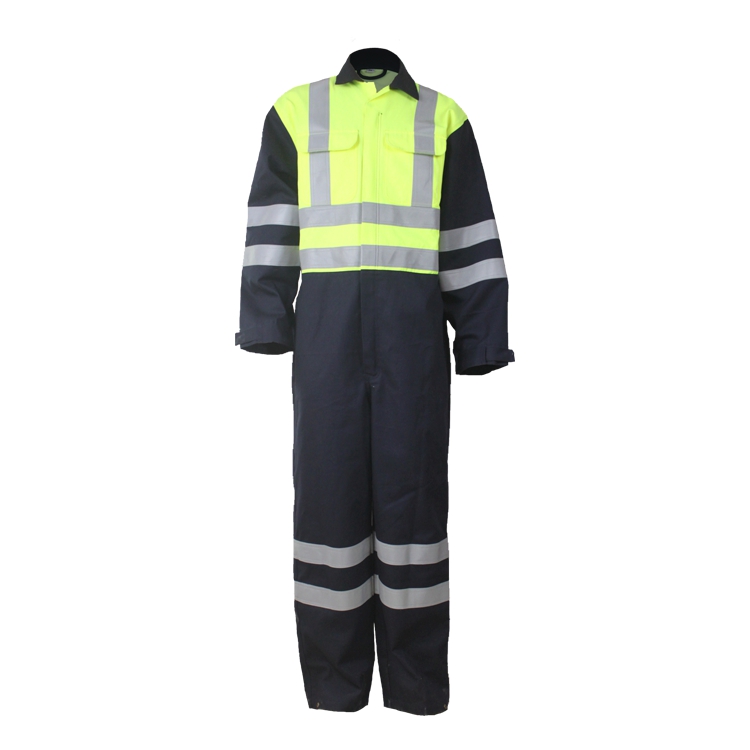

2020-12-15

Flame-retardant work clothes are actually what we usually call welding protective clothing. Flame-retardant work clothes are divided into intrinsically flame-retardant work clothes and durable flame-retardant work clothes. The fabric of intrinsically flame-retardant work clothes means that the yarn or silk has flame-retardant properties and high washing resistance. The relative post-treatment flame-retardant work clothes refer to clothing fabrics that do not essentially have flame-retardant properties. The yarns or silks are woven into fabrics and then subjected to post-treatment. Post-treatment flame-retardant fabrics have relatively poor washing resistance. So what are the fabrics of inherent flame retardant clothing?
Commonly used fibers and characteristics of inherently flame-retardant clothing:
(1) Nomex fiber: heat-resistant flame-retardant fiber (scientific name: meta-aramid fiber, domestically called aramid 1313 fiber);
Nomex fiber features:
1. Heat-resistant and inherently flame-retardant fiber, which has the characteristics of high strength, high wear resistance, low shrinkage, stable chemical structure, resistance to acid, alkali and organic chemicals;
2. Good dimensional stability, the heat shrinkage rate is only 1% after long-term use at 250, it will not melt when exposed to fire, there is no droplet, and no toxic gas is produced;
3. It starts to decompose when it exceeds 400, and the cloth becomes thicker when it is decomposed. It can isolate the heat transfer without cracking at a temperature of 900-1500. Flame-retardant work clothes made of Nomex fiber are light in weight, elastic, breathable, soft and comfortable to wear;
4. Since the outstanding performance of the cloth comes from the fiber itself, not the printing and dyeing auxiliaries, it can be washed at will, and its function remains unchanged;
5. The fiber is added to Kevlar bulletproof fiber to increase the breaking strength and tear strength of the cloth. Add nylon with carbon fiber core to the fiber, so that the cloth has an inherent anti-static function;
6. After Nomex is finished with oil and water repellent, the cloth has the advantages of oil and water repellency and easy decontamination.
(2) Kevlar fiber: high density and low elongation bulletproof fiber (scientific name: para-aramid fiber, domestically called aramid 1414 fiber);
Kevlar fiber characteristics:
1. Kevlar has very good thermal stability, fire resistance, chemical resistance, insulation, and high strength and modulus. Comparing the physical properties of Kevlar with other fibers, Kevlar fiber is asbestos 2 to 11 times the strength, 1.6 times the strength of high-strength graphite, 3 times the strength of glass fiber, and 5 times the strength of steel fiber under the same weight. And the density of Kevlar is very low, almost only half the density of asbestos;
2. Thermal stability, the Kevlar thermal test (TGA) is very stable, and there is no significant weight loss until 600;
3. Low corrosiveness, high-content Kevlar test piece, showing lower corrosivity than half-metal piece;
4. Abrasion resistance. Compared with asbestos fiber, Kevlar fiber exhibits very low abrasion resistance in good condition.
Therefore, flame-retardant work clothes made of the above-mentioned fabrics are widely used in petroleum, petrochemical, chemical, electric power and other industries, and are especially favored by labor protection departments of foreign-funded enterprises.
PREVIOUS POSTWorkers must keep cold and flame retardant protective clothing
PREVIOUS POSTWhy wear flame-retardant overalls?